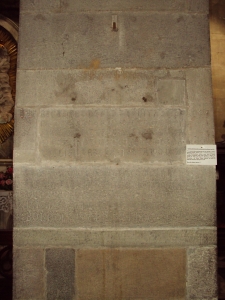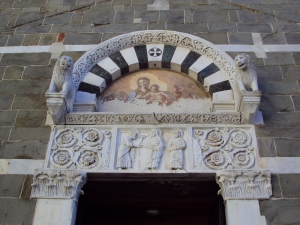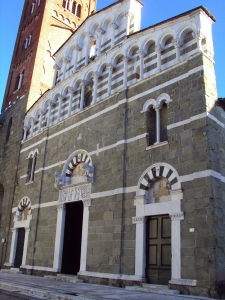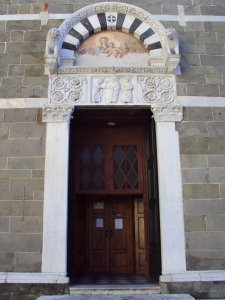Saint Peter Somaldi

Information
Foundation:
VIII secolo
District/Location:
Lucca
District:
Piana di Lucca

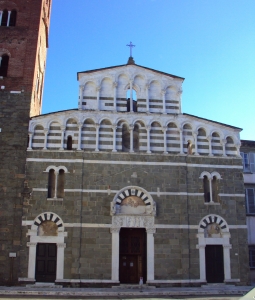
The building, located near the ancient medieval city walls, is of Lombard foundation but was rebuilt starting from the 12th century. The architrave sculpted by Guido Bigarelli in the mid-13th century is preserved in the 13th century facade.
Piazza San Pietro Somaldi, Lucca
The Lombard phase of the church is attested only by the documents - which report among other things the consecration, which took place in 763 - and from the echoing in the denomination of the name of the founder, the Lombard Sumualdo. Towards the end of the 12th century the church was completely rebuilt: inside, on the third pillar on the left, it is still possible to read an inscription of 1190 or 1199 which attests the donation by the rectors of the confraternity of San Nicolao of one hundred wagons of stones already worked ("carra de petris tracta et parata") as a contribution to building. The interior - with three naves divided by pillars - date back to this phase, and the perimeter walls, while the façade with white limestone strips follows, following the intervention of Guido Bigarelli's workshop towards the middle of the XIII century : to him we owe in particular the architrave of the central portal, dated 1248 and depicting the episode of the handing over of the keys to St. Peter. A little later than this date is the sail termination with a blind arcade and a more decisive two-color: the capitals with crochets argue in favor of a dating to the second half of the 13th century. The construction of the church was completed in the 14th century with the erection of both the upper part of the bell tower and the apse, both in brick; the bell tower was once set on an arch under which a road passed. Inside there is an Assumption by Zacchia da Vezzano from 1532 and a table with the Saints Antonio Abate, Bartolomeo, Francesco, Domenico and Andrea by Michelangelo di Pietro from 1497, as well as many interesting paintings from a later period: among these, we recall those of the 17th century by Gaspare Mannucci (Annunciation) and Tiberio Franchi (San Pietro). The organ of the church is an instrument of the Agati Tronci of the early twentieth century that incorporates parts of an older organ that tradition would like to have been used by Giacomo Puccini.
Scopri altre attrazioni vicino a Saint Peter Somaldi
See allYou may also like..
See allFind more
0








